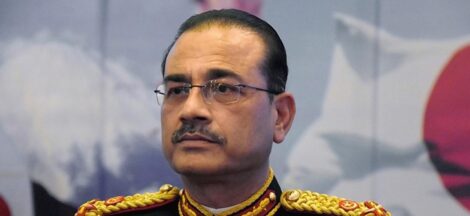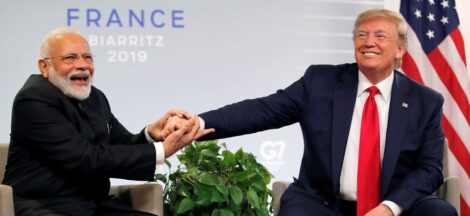By Girish Linganna
The year 2023 was a challenging one for Russia. It was marked by major events with mixed repercussions across multiple spheres. The war remained the most defining feature for Russia throughout the year. The two most crucial factors that Western sanctions were designed to influence must be evaluated for their utility.
Oil Windfall Fuels War Machine: Economic mobilization and the military production ecosystem have contributed to Russia’s unexpectedly strong economy, which is expected to see a 2-3% rise in GDP this year. On the economy front, indications are growing that Russia is getting better at circumventing sanctions. For instance, Bloomberg reports that as much as 99% of Russian oil exports are sold at prices higher than the $60-per-barrel ceiling, which is $24 lower than the average market price over the past 12 months.
Companies in the G7 cannot do business with Russia if the price of oil imported by sea exceeds $60 per barrel. This includes such services as marine transport and insurance. Also, with a convoluted system of exceptions, the European Union has effectively prohibited all Russian oil imports, forcing Moscow to rely on China and India.
The sanctions were meant to limit Russia’s ability to accrue money from selling oil at high prices, which would make it harder for Russia to pay for any potential military actions against Europe. The goal of these sanctions was to check a sharp rise in oil prices that would upset a large section of the European people and, inadvertently, benefit Russia politically. Several European countries—including Austria, Hungary, Poland, Finland and Slovakia—depend on Russia for 50%-100% of their oil and gas imports. One side-effect, though, was that it has altered the financial framework that governs oil and maritime trade—with Russia and China, for instance, using different currency, transhipment modes and so on in a way that some experts think would be hard to undo after the war, or if the sanctions regime were lifted.
As Iran and North Korea have done in reaction to such sanctions, Russia protects itself by using a large ‘shadow fleet’ of tankers whose ownership and insurance are unclear. Tankers turn off their digital transponders and, in international seas, Russian oil is moved from one ship to another to hide where it came from.
For the Kremlin, what matters is the money coming in and going out in roubles. This shows how easily the country can pay for its huge financial spending—such as going to war and giving more money and gifts to needy people before the March presidential elections.
The three main parts of the budget are the tax on oil extraction, the export fees on oil and petroleum products and the profit tax, which replaced the extraction tax in some oilfields. The gas business is also struggling. The money made from these sources in October was more than in any other month in 2021, and there is a strong upward trend.
Even though Russia has a lot of structural problems, it will not go bankrupt any time soon and it will be able to pay for its war until at least 2025, when a new US government takes office. Because of this, Defence Minister Shoigu talks openly about the need to keep up the special military action until that date.
Despite Losses, Defences Hold: From Russia’s point of view, the situation on the front has stabilized and is not nearly as bad as it was when the Kremlin lost territory it had taken in the Kherson and Kharkiv regions and could not count on solid lines. The Russian army is still a combat-ready and effective military force, thanks to a dense network of field fortifications, even though it has a lot of problems.
Ukraine lacked the tools, troops, or experience to break this line. The Ukrainian summer counter-offensive ended without meeting the basic requirements for success, which were to take the city of Tokmak and threaten the ground link with Crimea with artillery.
The Ukrainian counter-offensive has stopped for now. Also, after the end of spring, when the roads get muddy, the “mud season” makes it impossible to progress. Even though Russia suffered many casualties, its defences held, showing that it could handle the Ukrainian army’s Western military technology, which was mostly outdated and only available in small amounts.
Along with modern and very dangerous electronic warfare tools, the Russians use drones in large enough numbers that Ukraine cannot compete with because Russia has a strong economy. Currently, neither side can get around rationing the short artillery ammunition supply. Conversely, Russia is ahead of Ukraine and the West in the new phase of the ‘war of bases’.
The West is behind schedule in its attempts to boost production of munitions. The EU has already said that it will not be able to meet its March goal of sending one million gun shells and rocket launcher fuel to Ukraine. During the first year of the war, Russia fired 10 times that many rounds into Ukraine. It is said that the Russian military-industrial complex will make 2.5 million gun shells in 2024. They have been able to increase war production in two to three shifts.
From the Russian point of view, this may not be enough for a full-on war and large-scale offensive actions, but it is still at least twice or three times what Ukraine will get. On top of that, Ukraine still publicly wants to take back occupied land and has to share American weapons with Israel. Also, the Russians found safety in North Korea at the most critical time; North Korea is known to have sent Russia a million shells.
Also, the West is still having a hard time stopping the flow of important technologies needed to make high-tech Russian weapons, such as the Kinzhal, Iskander and so forth and cheap Iranian drones, such as Shahid. Russia does several things to get around Western limits, including routing important imports through third countries or transhipment points, hiding Customs data and using civilian middlemen to send goods with two uses to military-industrial firms. Companies based in Kyrgyzstan, China, Turkey and the United Arab Emirates, which are not party to Western bans, have become important hubs for re-exporting Western technologies.
In general, 2023 was a year of varying fortunes for Russia. While the economy exhibited surprising resilience, everything else was eclipsed by the war in Ukraine. (IPA Service)
(The author is a Defence, Aerospace & Political Analyst based in Bengaluru.)



